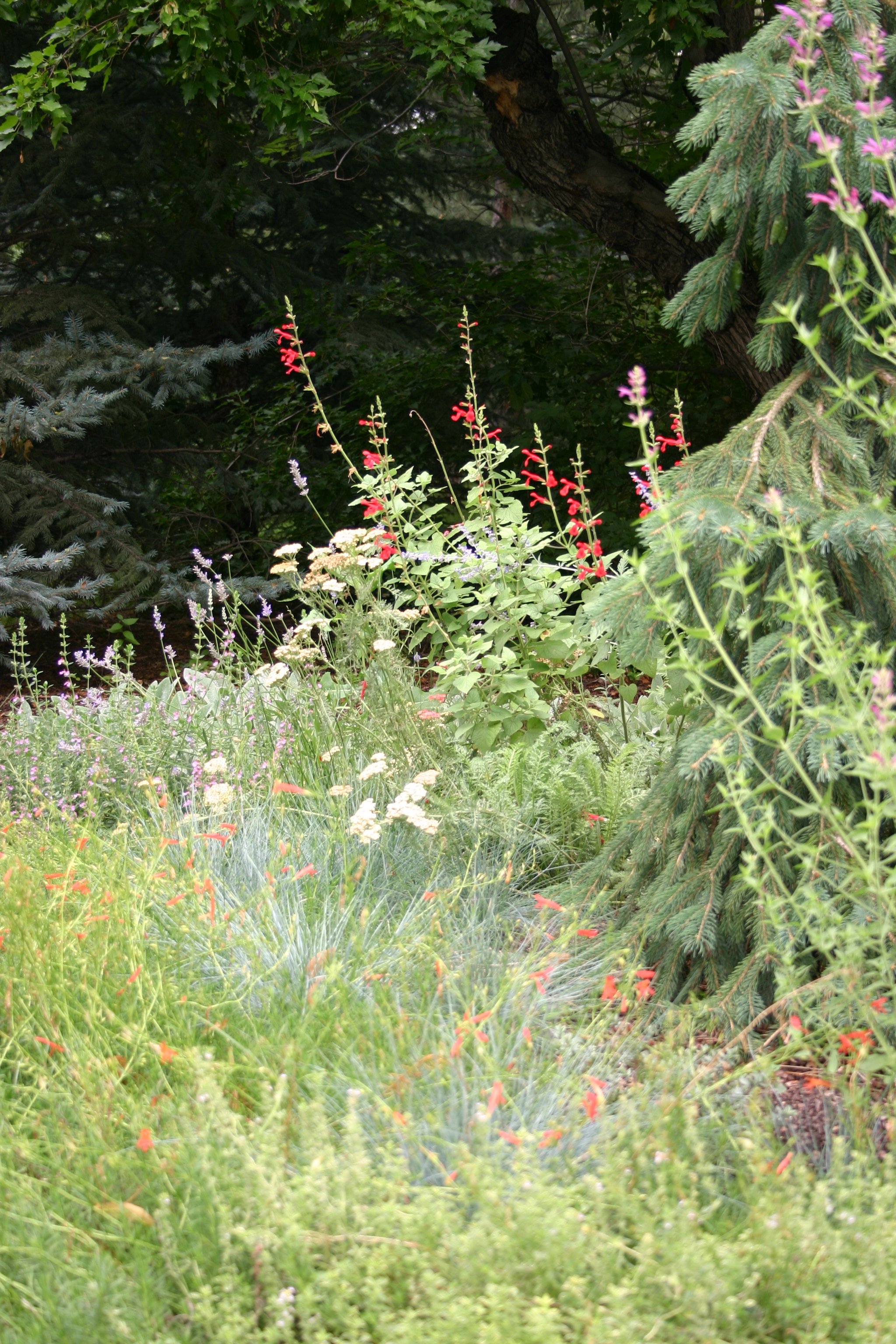Native Garden Myths
#1
Native naturalistic gardens, such as prairie and pollinator landscapes, aren’t aesthetically pleasing or colorful. They look messy and weedy.
Denver native pollinator front yard landscape designed by Honeywood
TRUTH. Not only are native gardens undoubtedly beautiful and profusely colorful, they serve a multitude of purposes - habitat restoration, pollinator protection, water conservation, soil preservation, carbon sequestration, no chemical or carbon outputs, and they reconnect us to nature. I honestly don’t know where the perception that native gardens look messy and weedy comes from. I think it’s partly due to our years of being surrounded by cookie cutter manicured lawns, shrubs and perfectly ordered flower beds. We also have a lot of transplants (people not plants) moving to Colorado who assume they can grow the same plants they grew in the south, the midwest, or the east coast, so they’re disappointed in our regional flora when the plants they’re used to growing don’t grow here. But, this doesn’t mean our native plants aren’t aesthetically pleasing, they’re just different. And done right, a native garden can knock your socks off!
#2
Xeriscaping means covering my landscape with rocks, mulch, dirt, or fake turf.
Denver native prairie pollinator landscape installation designed by Honeywood
TRUTH. The term xeriscaping was widely used in Colorado in the 90s and early 2000s. It was horrible for marketing and convincing people to add drought tolerant native plants to their landscapes. Even today, some believe this means “zero” scaping. Drought tolerant plants are acclimated to our regional climate and environment. The more you plant, the better! If you’re creating a water wise garden and using the right plants in the right place, water requirements are low. Our native plants are drought tolerant and thrive in their proper environments. This doesn’t mean they never need water. It means they are equipped to deal with substantially less water and periods of drought. A space full of rocks, mulch, dirt, or fake turf only causes more harm to our environment and biodiversity loss. Those choices are not living landscapes. Xeriscaped landscapes are alive, increase biodiversity, and create resilient urban ecosystems!
#3
Native gardens are time consuming and hard to take care of.
Colorado native pollinator garden designed by Honeywood
TRUTH. Naturalistic native gardens actually require less time and effort than a lawn and conventional landscapes once they are fully established. And, the extra bonuses? They don’t need polluting lawn mowers, toxic chemicals, and an overconsumption of water to grow and thrive. Pollinator prairie gardens do require management. It takes up to three years for a new garden to fully establish. During that time, you might have to stay on top of some weeding. As your garden fills in, the weeds get outcompeted by native plants. The denser the garden, the more weed suppression occurs.
Native gardens are intended to be left alone for the most part and allow nature do her thing. Flower heads should be left to provide pollen for pollinators and seeds for birds. Some native perennials benefit from dead heading in order to continue blooming through the season. You don’t need to do anything in the fall! This is where some the of “messy and weedy” thinking comes into play. Leaving your garden brown and proud during the winter allows for soil protection, water retention, and root growth. Most importantly, leaving your grasses and woody plant stems, provides cold season habitat protection and food for pollinators and birds.
When late spring arrives, the garden can be cut back and all the dead matter serves as carbon nutrients when added to your organic compost. Or, you can use the chop and drop method, leaving the cut down material on the ground to serve as mulch while it decays and adds nutrients to the soil. You don’t have to maintain your garden every weekend. You can simply enjoy it. But, if you’re like me, you’ll find a reason to be in the garden every day!
#4
Installing naturalistic native gardens shouldn’t cost as much as conventional landscapes.
Denver native pollinator backyard garden installation designed by Honeywood
TRUTH. Native flowers, grasses, and shrubs don’t come with a half off price plan. But, we have some control over our budget when selecting from gallon plants to plugs, as well as starting from seed. Installing a new naturalistic garden can cost just as much as installing sod, trees, and concrete. In the long run, a native landscape costs considerably less than a lawn or a conventional garden to maintain. So, you end up saving money! Installing any new landscape is a financial investment, so why not install a landscape that has something to offer our urban ecosystems, food webs, water conservation, and health? The misconception that converting to a naturalistic landscape should be less expensive than installing a conventional landscape should be reconsidered. We need to dispel the belief that rewilding spaces holds less value than the sprawling American lawn.
#5
Only the plants from my state should be used in my native garden.
Denver native pollinator garden designed by Honeywood
TRUTH. If we restrict ourselves to planting only local native flora, we’re going to face some challenges. In Colorado, we have different zones, microclimates, and ecosystem. What thrives in the foothills, mountains, high plains, and western prairies doesn’t mean it will thrive in your garden. For example, if you live in Denver, plants that thrive in our mountain regions like Lupine and Indian Paintbrush, might struggle in your urban landscape. We should be using a variety of native plants adapted to our region and the specific environments within our landscape. You’re limiting biodiversity by strictly planting Colorado native plants. We must consider our changing climate and the direct impact on our ecoregions. Our aim is to grow a variety of regional native species in order to adapt to these changes and provide for resilient ecosystems.
Honeywood Garden Design helps you create and build regenerative landscapes.








